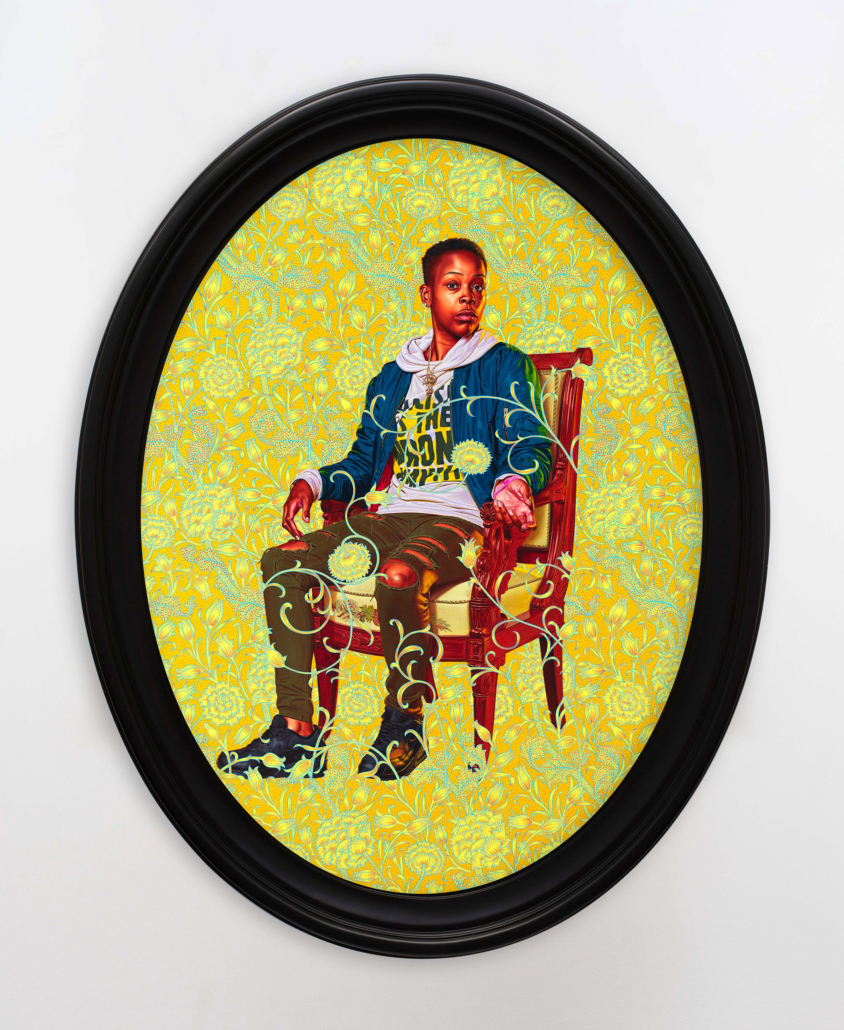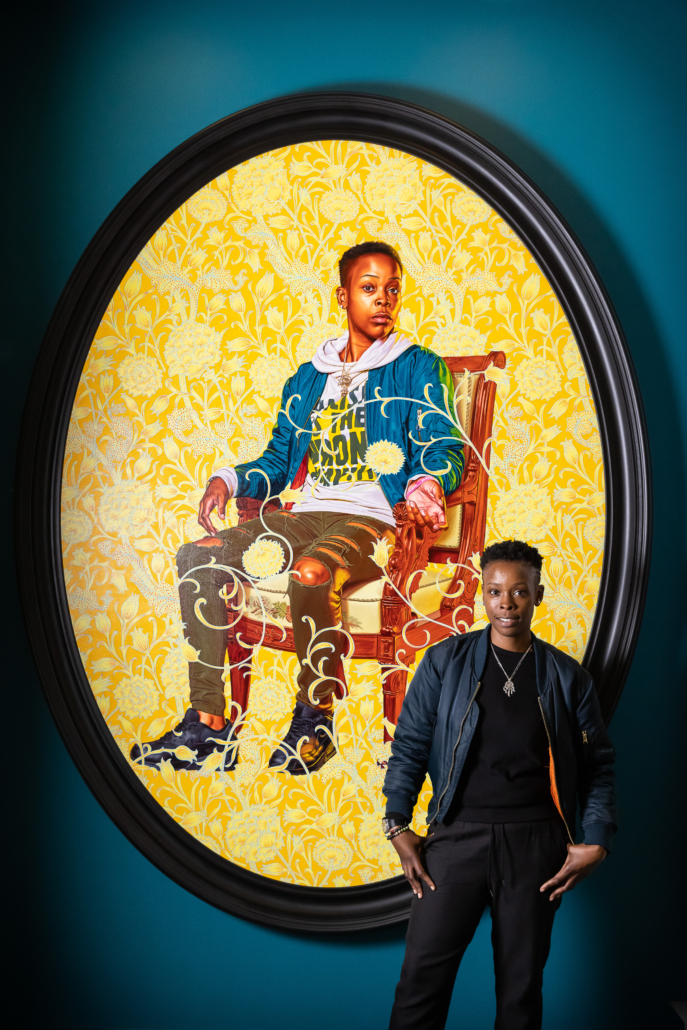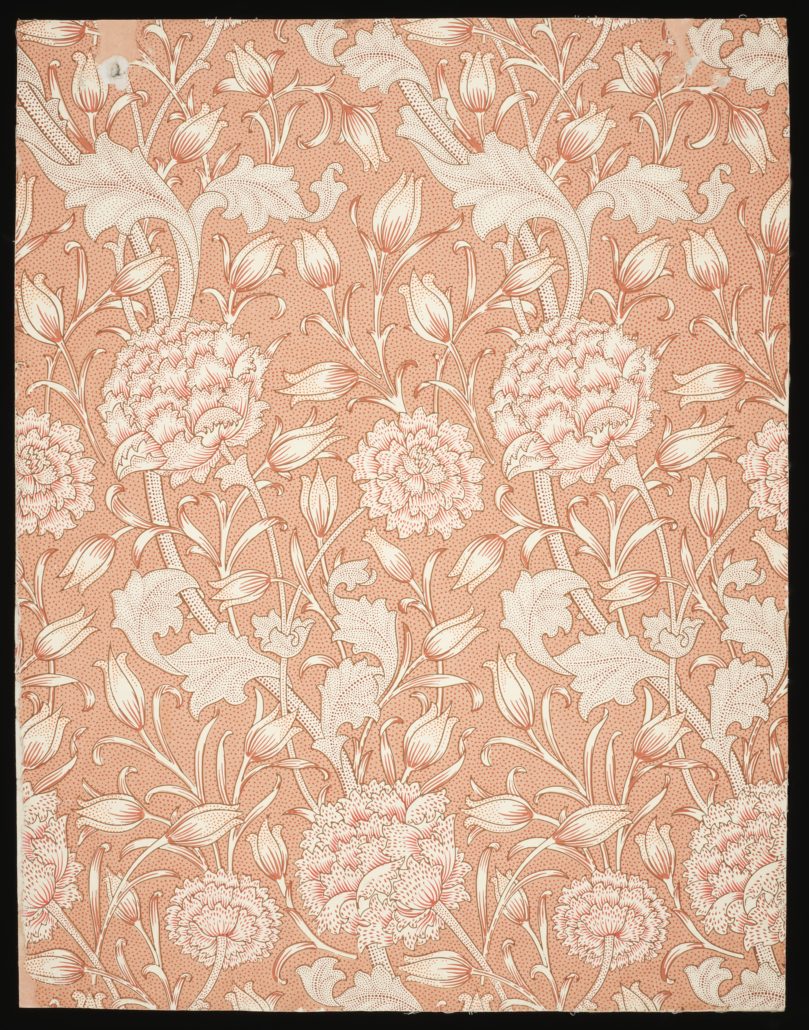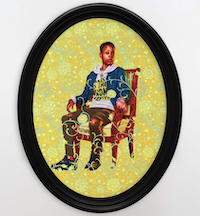
LONDON – Portrait of Melissa Thompson, a 2020 work by American artist Kehinde Wiley, is now on display in the V&A museum’s William Morris Room (room 125) in the British Galleries, alongside William Morris’s Wild Tulip designs that inspired it. The exhibition runs through October 26, 2023.
The monumental oil painting was made as part of Wiley’s series The Yellow Wallpaper, first exhibited at the William Morris Gallery in Walthamstow in 2020 and was acquired by the V&A East team in June 2021. The portrait goes on display as part of a series of initiatives marking the 125th anniversary of William Morris’s death in October, including the recently released V&A and Thames & Hudson publication, William Morris, by Anna Mason.
Wiley’s portrait depicts Melissa Thompson, a young woman the artist met at Ridley Road Market in Dalston, East London – a market first founded in the late 1880s and that remains a vibrant community hub today. Thompson, who lives in Ilford, but who grew up in Hackney, was with her mother and sister when Wiley approached her to feature in his new work.

Melissa Thompson said: “It was such a surreal moment when Kehinde Wiley approached me at Ridley Road Market and asked to take my portrait – I never thought I would end up in a museum. His work is so unique and powerful, it was a really life-changing thing for me. I love this portrait – it captures a moment in time. Seeing it on the wall at the V&A feels really special – I can now see parts of my own culture and east London represented in a museum.”
Wiley’s Yellow Wallpaper series offers a visual response to American novelist Charlotte Perkins Gilman’s acclaimed 1892 feminist text, The Yellow Wallpaper. Gilman’s text is a semi-autobiographical tale that sees the narrator confined to her bedroom after being diagnosed with hysteria and explores the disastrous consequences that can come about by denying women independence.
Wiley calls Gilman’s The Yellow Wallpaper “… a work of literary fiction that explores femininity and insanity by stepping upon the contours of what social decorum and societal mores are composed of. Madness becomes a metaphor for freedom and self-realization.” For these portraits, Wiley’s idea was “to use the language of the decorative to reconcile blackness, gender, and a beautiful and terrible past,” to position each of his female subjects “as autonomous, as powerful, as open to individual interpretation and as an emblem of strength within a society of complicated social networks.” The portrait’s background features a repeating floral motif inspired by the wallpaper and textile designs of William Morris – an artist and designer long associated with and collected by the V&A.

William Morris, ‘Wild Tulip’ wallpaper in pink colorway, 1884 (c) Victoria and Albert Museum, London
Kehinde Wiley was born in 1977 in Los Angeles, USA and lives and works between New York, USA; Beijing, China and Dakar, Senegal. Widely known for his highly naturalistic portraiture set against intricately patterned backgrounds, Wiley’s approach to painting exquisitely subverts the visual conventions of historic European and American portraiture typically depicting the power and privilege of the royal and aristocratic. In Wiley’s work, his own subjects – African American and African-Diasporic men and women – predominantly encountered on the street in cities around the world are crafted with fastidious detail at a larger-than-life scale. Wiley’s portraits elevate his sitters, challenge perceptions of blackness, and raise important questions about race, identity and the politics of representation.

Portrait of Melissa Thompson was acquired from the Stephen Friedman Gallery with generous support from Art Fund and a legacy donation from Dr. Philip da Costa, and is one of the first acquisitions destined for display at V&A East. One of the UK’s most significant new museum projects, V&A East celebrates global creativity and builds on the V&A’s long-standing heritage in east London and founding mission to make the arts accessible to all. Currently under construction in Stratford’s Queen Elizabeth Olympic Park, V&A East encompasses two sites – V&A East Storehouse at Here East, housing more than 250,000 objects, 1,000 archives and 350,000 books from the V&A collections, and V&A East Museum on Stratford Waterfront, opening in 2024 and 2025 respectively.
Click to learn more.


